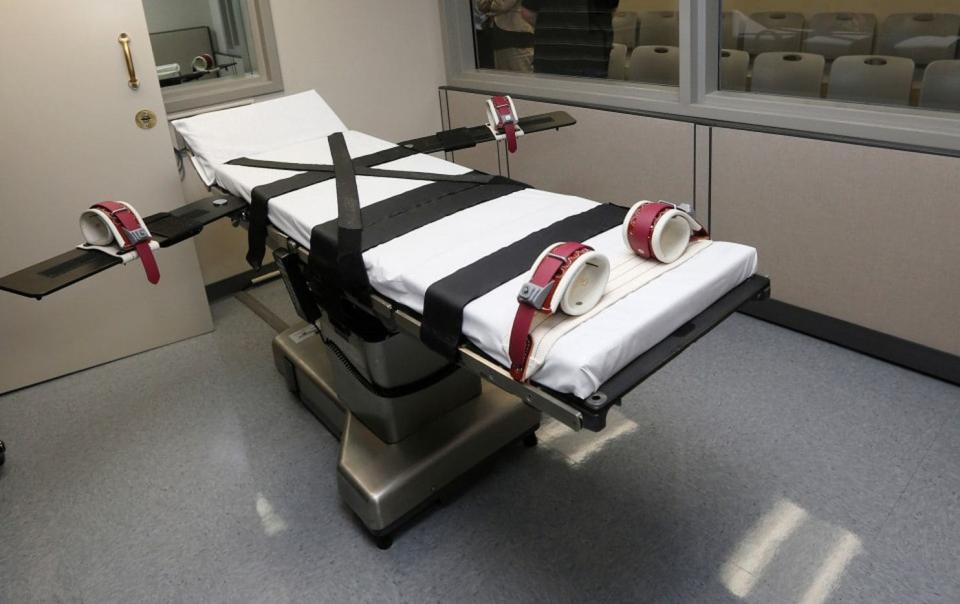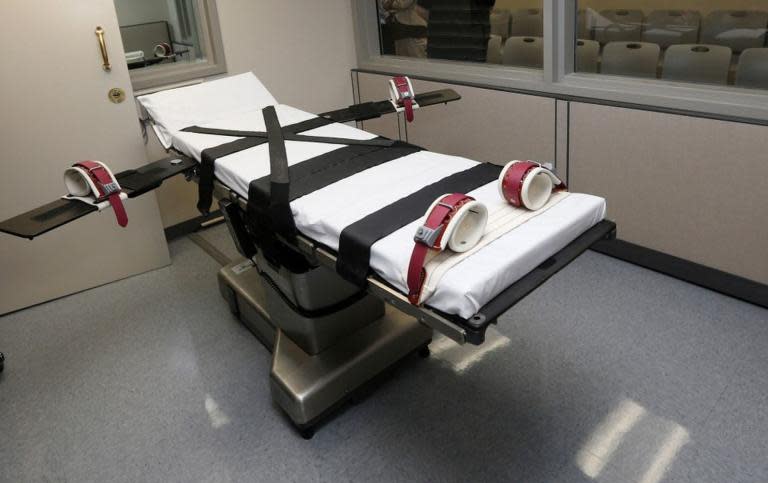Oklahoma executions: US state to use nitrogen to gas death row inmates, despite method deemed 'unsuitable for euthanising mammals'
Oklahoma has announced plans to use nitrogen gas to execute death-row prisoners, as states struggle to find alternatives to their dwindling supplies of lethal injection drugs.
The Midwestern state would be the first in the US to use the procedure, for which protocol has yet to be established. The decision came after a number of drug manufacturers barred their products from being used in lethal injections, leaving states with a shortage of options.
Nitrogen is an odourless and tasteless gas which makes up around 78 per cent of the air humans breathe – but it causes death when inhaled without any oxygen.
Announcing the plan on Wednesday, Oklahoma Attorney General Mike Hunter called the nitrogen gas procedure “effective, simple to administer, and easy to obtain”.
“Executions are the most profound application of state power,” he said. “I believe in justice for victims and their families, and in capital punishment as appropriate for dealing with those whose commit these crimes.”
Oklahoma adopted the procedure as a backup method in 2015, but has not used it – or developed a protocol for using it – in the years since.
Mr Hunter said implementation could take three to four months, on top of a 150-day waiting period for federal review, according to local news station KWTV.
Others were not as optimistic about the development.
Robert Dunham, executive director of the Death Penalty Information Centre, a capital punishment monitor, said it would be some time before the state could seek a death warrant for an execution using nitrogen.
He said it faced a court order requiring it to wait 150 days until after a use protocol was published and would probably face litigation.
Mr Dunham was not aware nitrogen hypoxia had ever been used anywhere in the world to execute a person.
He said the American Veterinary Medical Association deemed the process inappropriate for euthanising mammals and said it would take more than seven minutes to bring about the death of a 70-pound pig.
“This is another execution process that is untested, untried and experimental,” Mr Dunham said.
Dale Baich, one of the lawyers challenging the state’s current execution procedure, also doubted that the new protocol would be an improvement.
“This method has never been used before and is experimental,” Mr Baich told The Washington Post. “Oklahoma is once again asking us to trust it as officials ‘learn on the job’, through a new execution procedure and method.”
He added: “How can we trust Oklahoma to get this right when the state’s recent history reveals a culture of carelessness and mistakes in executions?”
Oklahoma suspended executions in 2015, after officials made a number of high-profile errors. In 2014, a problem with an IV left one inmate writhing on the bed for 20 minutes before his execution was called off. The next year, officials were discovered to have used the wrong drug in a different execution.
Now, the state is one of many experimenting with alternative execution methods as their supply of lethal injection drugs dissipates. In recent years, Florida has adopted new lethal injection drugs, Tennessee has gone back to using the electric chair and Utah has reintroduced the firing squad.
In a statement on Oklahoma’s new procedure, the local American Civil Liberties Union chapter said: “The question Oklahomans must ask is not whether they support the death penalty, but rather, do they trust this government with the power to kill its citizens.”


